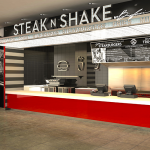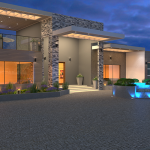The Future of Hospitality: Trends in Hotel Architecture and Design
The landscape of hospitality is constantly evolving, and with it, hotel architecture and design. As we move forward, these changes promise to redefine luxury, comfort, and sustainability in ways we’ve only begun to imagine. Dive into the innovative world where tradition meets innovation, setting the stage for the hotel architects and designers shaping the future of travel.
Emerging Trends in Hotel Architecture
The trends shaping the future of hotel architecture are as diverse as they are groundbreaking. Gone are the days of cookie-cutter buildings; today’s designs feature dynamic spaces that adapt to the needs and expectations of modern travelers. From structures that blend seamlessly with their natural surroundings to interiors that tell a local story, hotel architects are pushing the boundaries of traditional hospitality.
Biophilic design, which incorporates natural elements into building design to enhance connectivity to the natural environment, is seeing a surge in popularity. This approach not only improves guest experience but also contributes to their well-being, offering a tranquil retreat from the hustle and bustle of daily life.
Sustainability: A Core Element of Modern Hotel Design
Sustainability is no longer an option; it’s a necessity. Hotel architects and designers are adopting green practices, utilizing renewable energy sources, and selecting materials that minimize environmental impact. These efforts are not just about reducing the carbon footprint but also about creating spaces that guests can feel good about staying in.
Incorporating local materials into hotel construction not only supports the local economy but also reduces transportation emissions, further enhancing the sustainability of these projects. Moreover, the integration of advanced water recycling systems and energy-efficient lighting are becoming standard practices in hotel design.
Technology Integration: Enhancing Guest Experience
The integration of technology into hotel design is revolutionizing the guest experience. From smart rooms that personalize the environment according to the guest’s preferences to mobile apps that streamline check-in and check-out processes, technology is making stays more comfortable, convenient, and customized.
Beyond convenience, technology is being used to enhance the architectural beauty of hotels, with digital installations and interactive art pieces that engage guests. This fusion of technology and design piques curiosity and transforms ordinary spaces into extraordinary experiences.
The Role of Local Culture in Hotel Architecture
Embracing local culture in hotel design is becoming a hallmark of thoughtful architecture. Hotels are not just places to stay; they’re gateways to the local community, offering guests an immersive experience. Through architectural elements, interior decor, and curated experiences, hotel architects are connecting guests with the essence of their destination.
Local artisans and craftsmen are oftentimes involved in these projects, providing authentic touches that cannot be replicated. This approach not only enhances guest satisfaction but also fosters a sense of belonging and community within the hotel.
This deep integration of local culture into hotel architecture and design enriches the guest experience, turning a stay into a journey of discovery. Through these spaces, travelers gain a deeper appreciation for the destination, prompting a return visit or the exploration of new locales with similar immersive experiences.
Exploring the dynamic field of hotel architecture and design reveals a world where creativity meets functionality, and sustainability becomes inherent. The role of hotel architects is more crucial than ever as they craft experiences that go beyond mere accommodation, blending culture, technology, and environmental stewardship into every facet of the hospitality industry’s future.












